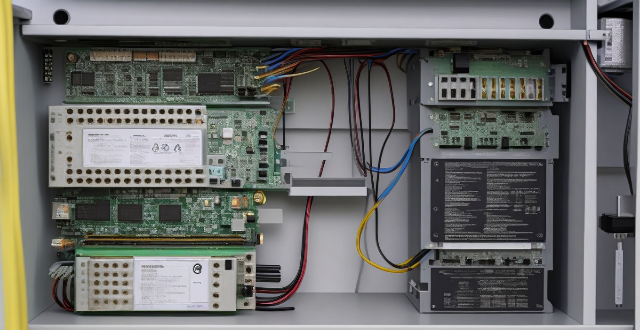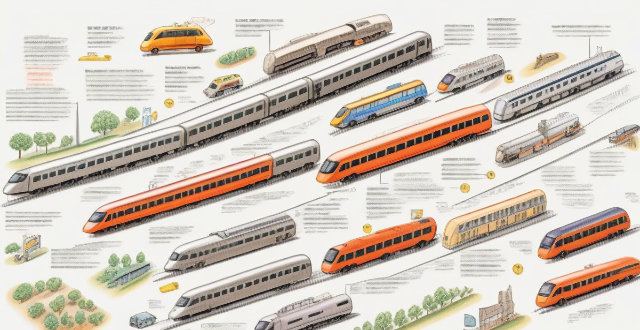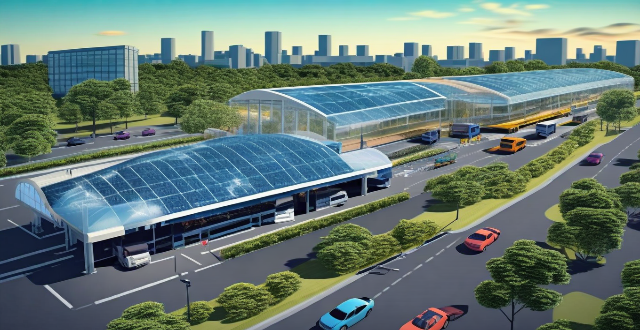Driver Traffic

What role does driver education play in promoting traffic safety ?
Driver education is crucial for promoting traffic safety by providing essential knowledge and skills to drivers. It helps them understand the rules of the road, develop safe driving habits, and respond appropriately to various traffic situations. The different aspects of driver education that contribute to traffic safety include understanding traffic laws and regulations, developing safe driving habits, handling emergencies and hazardous situations, enhancing driving skills, and raising awareness about road safety issues. By providing drivers with the necessary knowledge, skills, and attitudes to drive safely on the roads, driver education significantly reduces accidents and improves overall road safety.

What is the impact of distracted driving on traffic safety ?
Distracted driving is a major concern for traffic safety, as it significantly increases the risk of accidents and injuries. This article discusses the various impacts of distracted driving on traffic safety in detail. The negative impacts of distracted driving include an increased risk of accidents, reduced reaction time, impaired judgment and perception, and difficulty maintaining lane control. Distracted driving greatly increases the risk of accidents, with approximately 3,142 deaths in the United States in 2019 being attributed to it. When drivers are distracted, their reaction time is significantly reduced, impairing their ability to respond quickly enough to avoid potential accidents. Distracted driving also impairs a driver's judgment and perception, making it difficult for them to notice important cues such as traffic signals or pedestrian crossings. Finally, distracted driving can make it difficult for drivers to maintain lane control, potentially leading to head-on collisions or single-vehicle accidents. In conclusion, distracted driving has a significant negative impact on traffic safety. To ensure safer roads for everyone, it is essential that drivers avoid distractions while behind the wheel and focus solely on the task of driving.

How do speed limits affect traffic safety ?
Speed limits are crucial components of traffic safety. They serve as a tool to control the speed of vehicles on the road, thereby reducing the risk of accidents and fatalities. In this article, we will discuss how speed limits affect traffic safety in detail. Importance of Speed Limits: - Reduced Accident Severity - Improved Driver Reaction Time - Reduced Congestion Impact of Speed Limits on Traffic Safety: - Reduction in Fatalities - Decreased Risk of Injury - Increased Compliance with Traffic Laws

What are the most common causes of traffic accidents ?
Traffic accidents are a major concern for road safety, and understanding their causes is crucial in preventing them. Here are some of the most common causes of traffic accidents: 1. Distracted Driving 2. Speeding 3. Driving Under the Influence (DUI) 4. Reckless Driving 5. Adverse Weather Conditions 6. Road Conditions 7. Mechanical Failures 8. Driver Fatigue 9. Pedestrian Errors 10. Animal Crossings

How do I find cycling routes that avoid traffic ?
Cycling is a great way to exercise and explore, but sharing the road with vehicles can be dangerous. To ensure a safe ride, it's important to find cycling routes that avoid traffic. Some tips include using online mapping tools like Google Maps or Strava, checking with local cycling groups, looking for dedicated bike infrastructure, and planning your route ahead of time. By following these steps, you can enjoy a safe and enjoyable ride without worrying about traffic.

How can technology help improve traffic safety ?
Traffic safety can be improved through the use of technology such as autonomous vehicles, advanced driver assistance systems, connected vehicles, smart infrastructure, and augmented reality head-up displays. These technologies aim to reduce human error and distractions while driving, provide real-time information about traffic conditions and road hazards, and create a safer transportation ecosystem for all users.

How does weather affect traffic safety ?
Weather conditions significantly impact traffic safety, with adverse weather increasing the risk of accidents. Understanding how different weather conditions affect driving abilities and taking necessary precautions are essential for ensuring safety. Rain, snow, ice, fog, and wind all pose unique challenges to drivers, such as reduced visibility and slippery roads. To drive safely in these conditions, maintain vehicle readiness through regular maintenance and adjust driving habits by slowing down and increasing following distance. Additionally, being prepared for emergencies with an emergency kit and planning your route can further enhance safety. By prioritizing safety and adapting to weather conditions, drivers can significantly reduce the likelihood of accidents and ensure safer journeys for everyone on the road.

What are the consequences of drunk driving on traffic safety ?
Drunk driving has serious consequences for traffic safety, including slowed reaction time, impaired judgment, reduced attention span, increased risk of serious injuries or fatalities, and legal consequences. It is essential to avoid driving under the influence of alcohol to ensure the safety of all road users.

How do you connect an AC stepping motor to a microcontroller or driver board ?
Connecting an AC stepping motor to a microcontroller or driver board involves selecting the right board, connecting the power supply, attaching the motor, programming the board, testing the connection, and troubleshooting any issues. Materials needed include the motor, board, power supply, wires, and optionally a breadboard for temporary connections. Tips include double-checking connections and code, using a breadboard before soldering, and following safety guidelines when working with high voltages.

What are some practical tips for teaching road safety to children ?
Teaching road safety to children is crucial for their well-being. Start by talking about traffic signals, pedestrian crossings, and the importance of looking both ways before crossing. Use visual aids like books, videos, and games to make learning fun. Practice what you've taught in real-life situations, such as crossing the street or role-playing different scenarios. Set a good example by following traffic rules yourself and avoiding distractions. By doing so, you'll help your child develop good habits that will keep them safe on the road.

How does an integrated transportation system reduce traffic congestion ?
Integrated transportation systems reduce traffic congestion by promoting diverse modes of travel like public transit, biking, walking, and carpooling. These systems also improve traffic management through smart controls, congestion pricing, and dedicated high-occupancy vehicle lanes. Land use planning, such as mixed-use developments and compact cities, reduces the need for long-distance travel. Intelligent Transport Systems (ITS) provide real-time information and future advancements like autonomous vehicles could optimize traffic flow. Educational campaigns and Travel Demand Management strategies influence behavior towards efficient transport modes. Infrastructure investments in improved roads and intermodal facilities enhance overall transport efficiency. This multifaceted approach results in a more efficient and flexible transportation network that distributes traffic across various modes, reducing road congestion.

What are the potential uses of IoT in transportation ?
The Internet of Things (IoT) has the potential to revolutionize the transportation industry by making it more efficient, safe, and sustainable. Some of the potential uses of IoT in transportation include real-time traffic monitoring, smart parking systems, intelligent traffic signals, vehicle tracking, maintenance alerts, fuel efficiency monitoring, crash detection and response, anti-theft systems, driver behavior monitoring, electric vehicle charging infrastructure, route optimization, and smart public transit. These technologies can improve traffic management, fleet management, safety and security, and sustainability in the transportation industry.